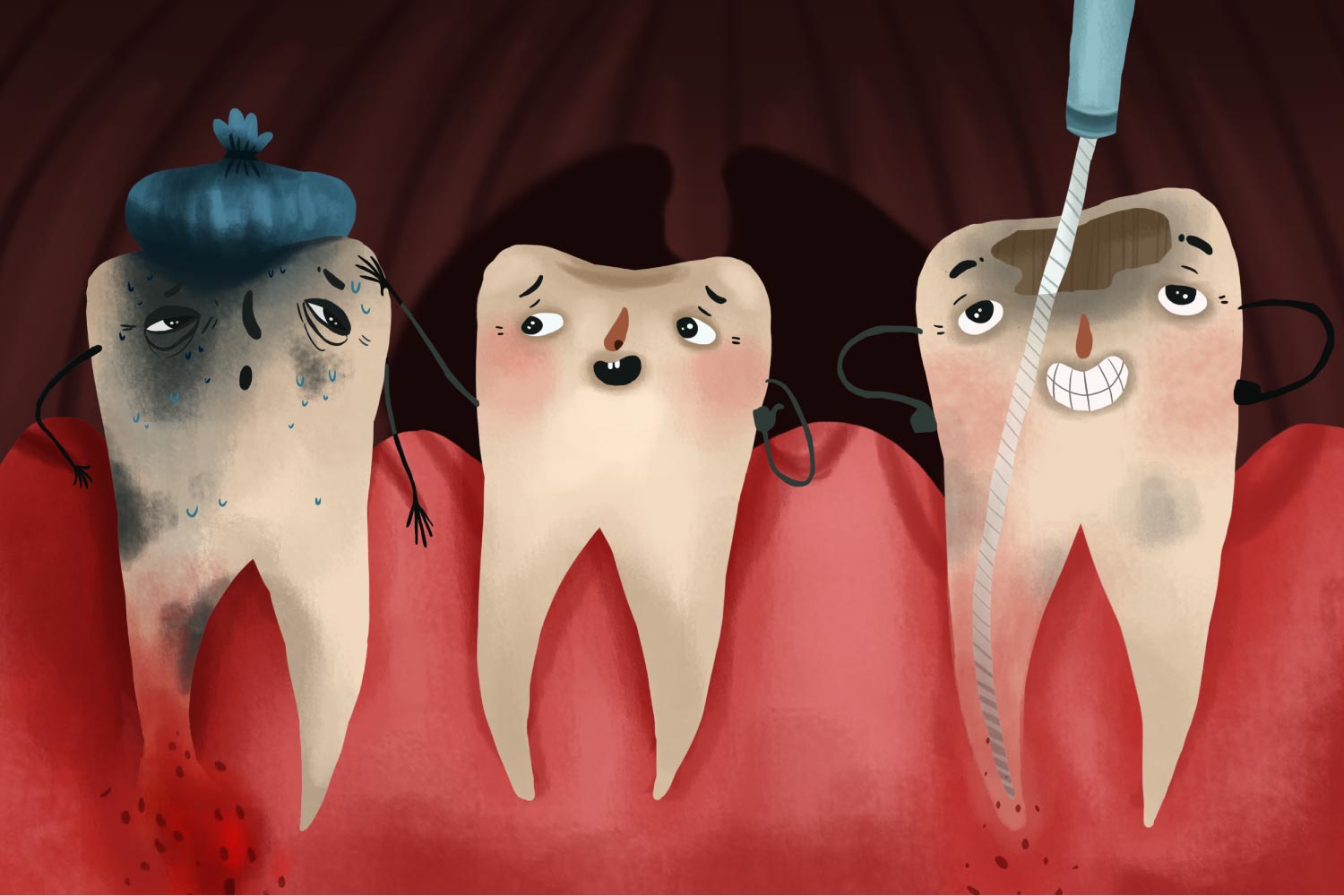
Stages of Tooth Decay & How to Prevent It
September 30, 2021 1:23 amIn this blog post, we’ll take a look at the different stages of tooth decay and how to maintain a healthy smile.
What Is Tooth Decay?
Plaque is composed of bacteria that grows on the surface of the teeth. Bacteria feeds upon your dietary sugar and starch. The bacteria then release harmful acids that wear down your enamel, the hard outer layer of your teeth. This demineralizes and weakens your teeth.
Decay is characterized by weakened areas of tooth enamel. If these areas are not fortified, they will develop into permanent areas of damage in the form of hole, called a cavity. Cavities increase your tooth’s risk of infection and loss because bacteria can more easily reach the pulp, the inner layer of your tooth, which is made of blood vessels and nerves.
Some symptoms of tooth decay include:
Stages of Tooth Decay
- Demineralization
- Enamel Cavities
- Cavities That Extend Into Dentin
- Pulp Damage
- Tooth Abscess
During the demineralization process, plaque begins to weaken the enamel, causing it to become more porous and soft. At this point, you may notice white spots on your teeth where the enamel is not as strong.
Drinking plenty of water, using toothpaste or mouthwash with fluoride, and receiving a fluoride treatment from your dentist can help remineralize and strengthen your teeth to prevent cavities. You also want to decrease further demineralization by cleaning away bacteria and giving bacteria less to feed on. This involves brushing your teeth twice a day, flossing every day, and consuming a balanced diet low in sugar and acid. Regularly visiting the dentist allows your dental team to identify areas that need extra attention during your at-home oral care.
Demineralized enamel and early-stage tooth decay can often be reversed with improved oral hygiene and a better diet. But if the decay is advanced enough, you will need a filling procedure to clean out the damaged enamel. The hole will then be sealed with a special tooth-colored material.
Dentin is the middle layer of your teeth. Because it is softer than enamel, it’s more susceptible to damage. Damage that extends into this layer will cause pain and sensitivity. Treatment will involve removing the affected tissue, a filling, and/or a crown to restore the tooth’s strength.
The pulp is the innermost, softest layer of the teeth where the tooth’s nerve endings can be found. When bacteria reach the pulp, it can cause the tooth to swell, causing immense pain. You might also experience symptoms like bad breath, a bad taste in your mouth, and changes in tooth color. Root canal therapy can help clear your tooth of infected tissue.
When bacteria enters decaying pulp tissue, it can cause an infection that leads to an abscess. Your need to seek treatment as soon as possible to prevent tooth loss and jawbone damage.
Affordable Preventive Dentistry in Canton, GA
No matter the state of your oral health, Riverstone Dental Care has different treatment plans that we customize for your needs. We’d love to take care of you and your smile! Contact us today to schedule an appointment. Before your visit, please take a look at our patient forms.
Image from Authority Dental under CC 2.0
Categorised in: Cavity Prevention, Restorative Dental Care